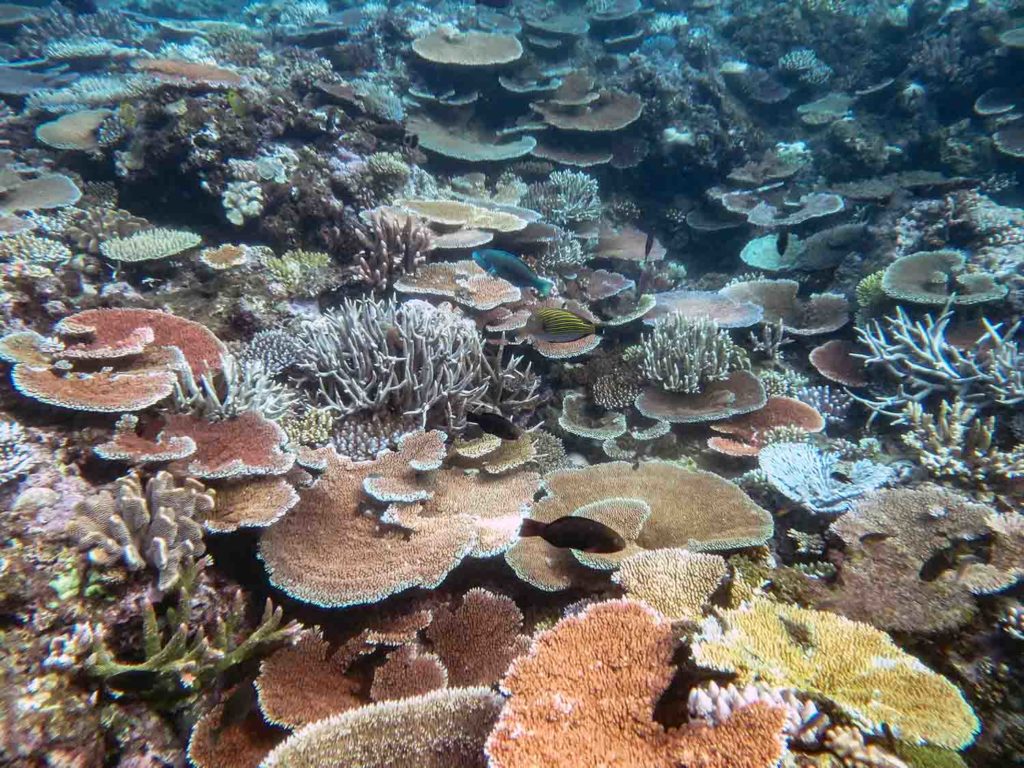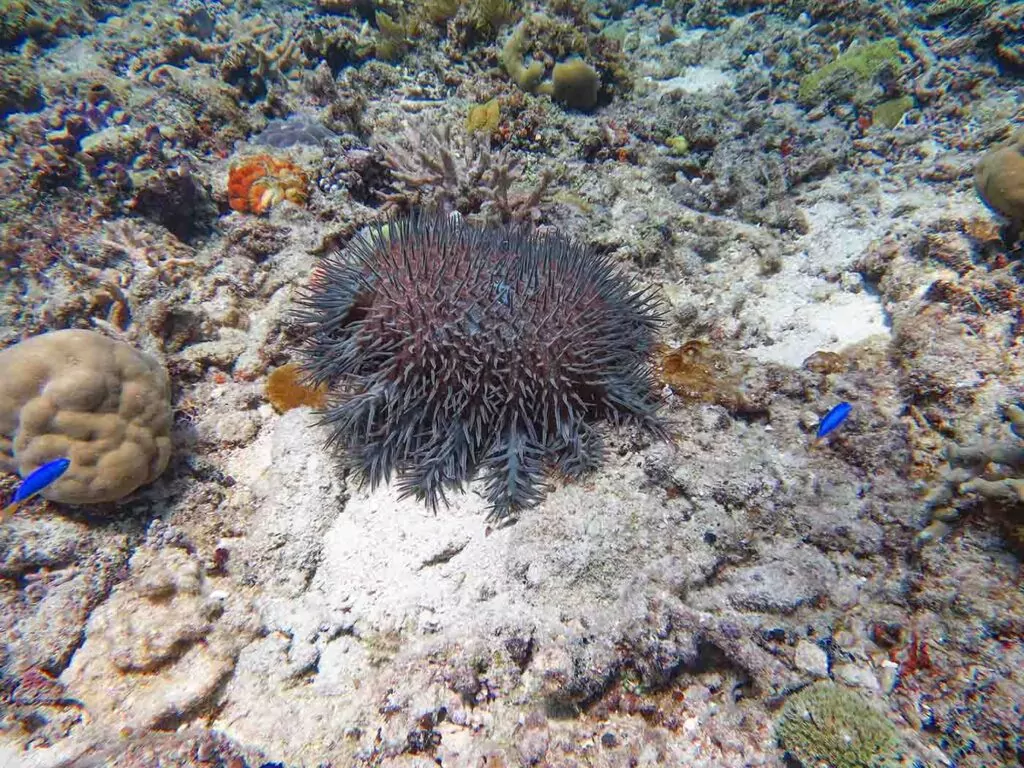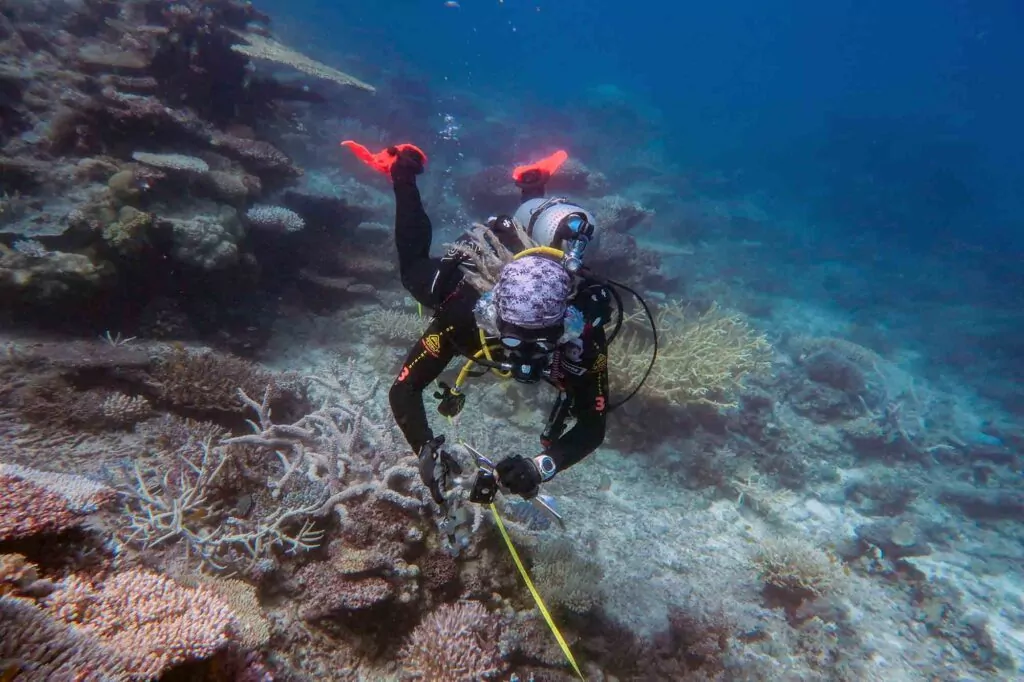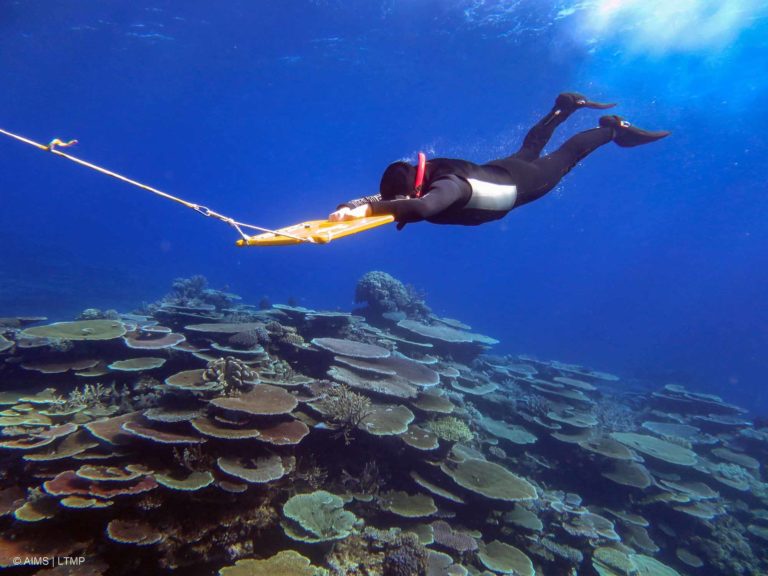The northern and central Great Barrier Reef have recorded their highest amount of hard coral cover since the Australian Institute of Marine Science (AIMS) began its long-term monitoring programme 36 years ago – but the experts are not getting too excited just yet.
AIMS’ just-published Annual Summary Report on Coral Reef Condition for 2021/22 shows another year of increased coral cover across much of the GBR, which stretches over 2300km. In 87 representative reefs surveyed between August 2021 and May 2022, average hard coral cover north of Cooktown increased from 27% the previous year to 36% and in the central GBR from 26% to 33%.
Concern remains about the southern region, however, where cover decreased from 38% in 2021 to 34%.


Results in the north and central GBR were indicators that damaged areas of reef could still recover, according to AIMS CEO Dr Paul Hardisty. “A third of the gain in coral cover we recorded in the south in 2020/21 was lost last year due to ongoing crown-of-thorns starfish outbreaks. This shows how vulnerable the reef is to the continued acute and severe disturbances that are occurring more often, and are longer-lasting.”
The increased frequency of mass coral bleaching events was “uncharted territory”, he said, with this year’s event the fourth in the past seven years – and the first to occur during a La Niña event (the colder counterpart of El Niño).
“In our 36 years of monitoring the condition of the Great Barrier Reef we have not seen bleaching events so close together,” said Dr Hardisty. “Every summer the reef is at risk of temperature stress, bleaching and potentially mortality, and our understanding of how the ecosystem responds to that is still developing.
“The 2020 and 2022 bleaching events, while extensive, didn’t reach the intensity of the 2016 and 2017 events and, as a result, we have seen less mortality. These latest results demonstrate that the reef can still recover in periods free of intense disturbances.”


AIMS monitoring programme team-leader Dr Mike Emslie said that the increase in coral cover continued to be driven by fast-growing Acropora corals. But he warned that the genus was particularly vulnerable to wave damage of the sort generated by strong winds and tropical cyclones.
“They are also highly susceptible to coral-bleaching, when water temperatures reach elevated levels, and are the preferred prey for crown-of-thorns starfish,” he said. “This means that large increases in hard coral cover can quickly be negated by disturbances on reefs where Acropora corals predominate.”
Dr Emslie said climate change was driving increasingly frequent and longer-lasting marine heatwaves. “The peak of the most recent bleaching event in March occurred when the accumulated heat stress caused widespread bleaching but not extensive mortality,” he said.
“The increasing frequency of warming ocean temperatures and the extent of mass bleaching events highlights the critical threat climate change poses to all reefs, particularly while crown-of-thorns starfish outbreaks and tropical cyclones are also occurring. Future disturbance can reverse the observed recovery in a short amount of time.”
Also on Divernet: What Will It Take For Coral to Survive?, GBR Bleaching Again – As Fish Fade To Grey, 10 Ways Tech Is Rescuing Coral, Towering Reef Discovered In GBR

